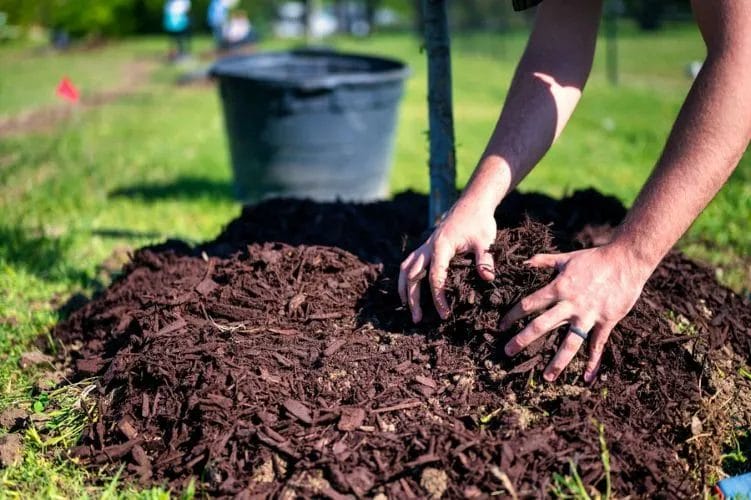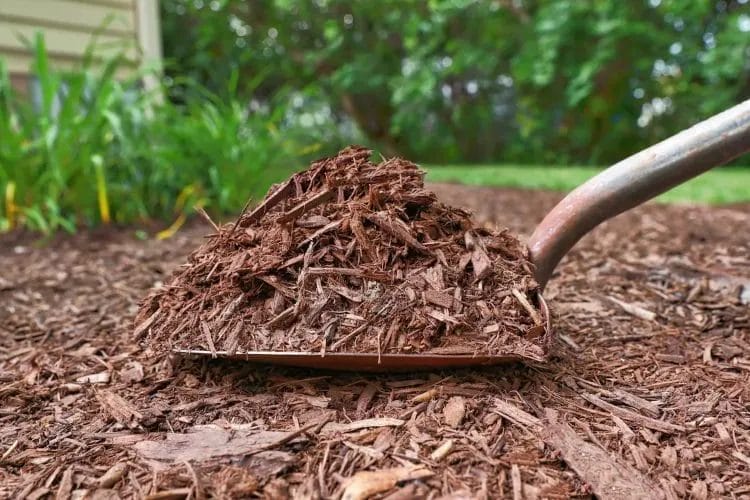
Just understanding the importance of proper soil preparation and planting procedures can significantly enhance the success of your ornamental plants. This guide will provide you with vital techniques to ensure your landscape thrives under your care. From assessing your soil type to following best practices for planting, these steps are vital for achieving a vibrant garden. For more detailed guidelines, refer to this resource on Soil Preparation and Planting Procedures for Ornamental … with insights that align with the expertise of Smith Brothers Services, Smith Brothers Landscaping, and Smith Brothers Tree Services.
Importance of Soil Preparation

The foundation of a successful landscape lies in proper soil preparation. By ensuring that your soil is healthy and well-structured, you provide the optimal environment for ornamental plants to thrive. This process not only improves plant health but also enhances nutrient availability and water retention, which are important for vibrant gardens. Whether you’re working with Smith Brothers Services or tackling the task yourself, taking the time to prepare your soil effectively will result in lush and visually appealing outdoor spaces.
Soil Testing
About 90% of plant growth issues stem from soil-related problems, making soil testing an important step in preparing your landscape. By analyzing your soil’s pH and nutrient levels, you can identify deficiencies that may affect your ornamental plants. This information empowers you to make informed decisions about amendments and improvements, ensuring that your plants receive the proper support they need to flourish. Utilize Smith Brothers Landscaping or conduct your own tests to kickstart the process.
Amending Soil
Any landscape project can benefit from soil amendments that enhance texture and fertility. Adding organic matter, such as compost or well-rotted manure, enriches your soil, increases its ability to hold moisture, and encourages beneficial microbial activity. By implementing these amendments, you set a solid stage for healthy ornamental plant growth in your garden.
Even simple amendments can drastically change the quality of your soil. Incorporating materials like sand to improve drainage or peat moss to boost water retention allows you to customize your soil’s characteristics to meet the needs of specific plants. Keeping in mind the unique requirements of different ornamental species will help ensure that your landscape flourishes. For professional assistance, consider reaching out to Smith Brothers Tree Services, who can offer expert guidance on soil enhancement tailored to your landscape. Invest time in amending your soil, and you’ll reap the benefits in vibrant plant growth and a beautiful garden.
Site Selection and Design

You need to carefully consider your site selection and design, as these factors play a vital role in the success of your ornamental plants. The right location not only enhances the aesthetic appeal of your landscape but also ensures that your plants thrive in their environment. Evaluate various aspects such as sunlight, soil, and existing features of your landscape to create a harmonious and sustainable design that reflects your vision. Partnering with experienced professionals like Smith Brothers Services can provide additional insight and support in your landscape planning.
Evaluating Sunlight and Drainage
Evaluating the sunlight exposure and drainage capabilities of your site is necessary for healthy plant growth. Take note of both direct and indirect sunlight areas throughout the day. This will help you determine which plants are best suited for specific locations within your landscape. Additionally, assessing drainage will prevent waterlogging, which can lead to root rot and other problems. Ensuring a proper balance between sunlight and drainage will create a thriving environment for your ornamental plants.
Planning Plant Placement
Between different plant types, sizes, and their mature growth habits, careful planning is required for optimal placement in your landscape. Consider how each plant will interact with nearby species to avoid overcrowding while allowing for proper air circulation and light exposure. Take note of color harmony, blooming times, and seasonal interest when positioning your plants. Proper planning will not only enhance visual appeal but also promote plant health, ensuring they flourish together in their designated spots.
Even spacing and strategic grouping can also create a more dynamic and visually appealing landscape. When planning plant placement, consider the height, width, and growth rate of each plant. Taller plants should be positioned in the back or center of beds, while shorter plants can fill in the front. Additionally, consider the seasonal changes in foliage and flowering, as this will ensure your landscape remains attractive year-round. Utilizing professional services like Smith Brothers Landscaping can help you achieve a well-designed, flourishing garden space tailored to your preferences.
Plant Selection

Assuming you want to create a beautiful landscape, plant selection is vital for achieving your desired aesthetic. Choosing the right ornamental plants can enhance your garden’s beauty, ensure resilience, and promote biodiversity. Consider factors like climate, soil type, and maintenance needs when making your selections. With careful thought and planning, you can curate a stunning display that complements your outdoor space.
Choosing the Right Ornamental Plants
Plants come in an array of shapes, sizes, and colors. When selecting ornamental plants, prioritize those that suit your local environment and personal taste. Evaluate their growth habits and flowering seasons to create visual interest, while also considering how they will thrive in your specific landscape conditions. Engaging with experts like Smith Brothers Landscaping can guide your choices and bolster your landscape’s success.
Understanding Plant Hardiness Zones
Right plant selection involves an awareness of your local hardiness zone, as this affects your ornamental plant choices significantly. Understanding these zones helps you choose plants that can withstand local temperatures and climatic conditions, ensuring their health and longevity in your landscape.
It’s important to assess the USDA Plant Hardiness Zone Map, which outlines regions based on average minimum winter temperatures. By knowing your zone, you can confidently select plants that not only survive but thrive in your environment. This ensures you invest in plants suited to your climate, minimizing the risk of failure and ensuring vibrant growth. For expert advice, consider consulting with Smith Brothers Tree Services, who can provide additional insights tailored to your unique landscape needs.
Planting Techniques
Despite the initial preparation, the success of your ornamental plants greatly relies on effective planting techniques. Proper planting not only enhances the visual appeal of your landscape but also contributes to the overall health and growth of your plants. By following the right methods, you can ensure that your ornamental plants thrive and make a lasting impact on your outdoor space, whether you choose to rely on your skills or seek assistance from Smith Brothers Landscaping.
Digging Holes Properly
On a practical note, digging holes properly sets the foundation for successful planting. Ensure that each hole is at least twice as wide as the root ball of your plant, allowing ample room for roots to spread. The depth should correspond to the root ball’s height so that the plant sits at the same level as it did in its container. This technique promotes healthy, robust growth and should be practiced faithfully in your landscaping endeavors.
Planting Depth and Spacing
After digging the holes, attention must turn to planting depth and spacing to foster your plants’ growth potential. Proper depth ensures that roots are adequately buried, while correct spacing prevents overcrowding, promoting air circulation and access to nutrients. These factors play a vital role in the long-term success of your ornamental planting.
Understanding the ideal planting depth is necessary to support your ornamental plants’ development. Place the plant so that its root ball is level with the soil surface, avoiding burial of the trunk, which can cause decay. Moreover, consider the mature size of each plant when spacing them; this helps each plant access sunlight and water effectively. Ensure ample space between plants to minimize competition and allow for airflow, which is necessary for preventing diseases. For more detailed guidance, don’t hesitate to consult Smith Brothers Tree Services, who can provide expert advice tailored to your landscape needs.
Watering and Mulching

To ensure your ornamental plants thrive in your landscape, implement an effective watering and mulching strategy. Proper watering helps maintain hydration levels, especially during dry spells, while mulching provides added benefits by regulating soil temperature and moisture retention. It also suppresses weed growth, making maintenance easier for you.
Establishing an Irrigation Plan
With a well-thought-out irrigation plan, you can tailor your watering schedule based on your plants’ specific needs and the local climate. This plan should include methods like drip irrigation for efficiency, ensuring that your plants receive the optimal amount of water without waste.
The Benefits of Mulching
Between conserving moisture, suppressing weeds, and enhancing soil fertility, mulching plays a vital role in your landscape management. By applying organic mulches, you also improve soil structure and promote beneficial microorganisms, contributing to healthier plant growth.
Even more benefits of mulching include temperature regulation for the root zones of your plants. During hot weather, mulch provides a cooling effect, while in winter, it helps insulate the soil. Additionally, as organic mulch breaks down, it releases nutrients into the soil, further enhancing the health of your ornamental plants. Consider consulting with experts such as Smith Brothers Services or Smith Brothers Landscaping for tailored advice on mulching techniques that best suit your landscape needs.
Post-Planting Care
Many aspects of post-planting care are vital to ensure the success of your ornamental plants. After planting, you will need to monitor moisture levels, protect plants from extreme weather, and consider proper mulching techniques to retain soil moisture. Consistent care in the early stages aids in establishing a strong root system, which is vital for the survival and growth of your landscape investments.
Fertilization Strategies
Post-planting, your ornamental plants may benefit from a balanced fertilization strategy. It’s advisable to wait a few weeks after planting before applying fertilizer, allowing the roots to settle in. When you fertilize, choose a slow-release fertilizer to provide your plants with nutrients over an extended period, ensuring they receive the appropriate sustenance as they grow.
Pest and Disease Management
Beside fertilization, effective pest and disease management is vital for your plants’ health and longevity. Regularly inspect your landscape for signs of infestations or disease, and act promptly to address any issues that arise. An integrated approach combining cultural practices, biological control, and targeted treatments will help you maintain the vitality of your ornamental plants.
Fertilization strategies play an integral role in pest and disease management. Healthy plants are better equipped to resist pests and diseases, making it vital to provide the right nutrients for robust growth. You can further enhance plant resilience by incorporating organic matter into your soil, as this improves overall soil health and promotes beneficial organisms. By maintaining a proactive care routine, you will help ensure that your ornamental plants flourish, supported by the experienced hands of services like Smith Brothers Landscaping and Smith Brothers Tree Services.
Final Words
The successful establishment of ornamental plants in your landscape hinges on proper soil preparation and planting procedures. By ensuring your soil is well-aerated, rich in nutrients, and suitable for your chosen plants, you maximize their growth potential. Whether you choose to rely on Smith Brothers Services for expert guidance or implement these practices yourself, investing time in these steps pays off. For comprehensive care, consider integrating Smith Brothers Landscaping and Smith Brothers Tree Services into your maintenance routine, ensuring your landscape thrives beautifully for years to come.





